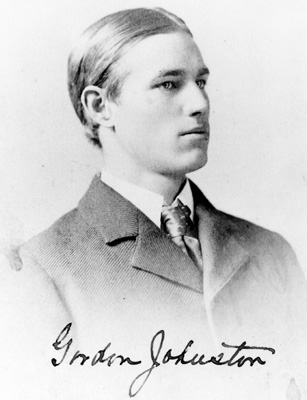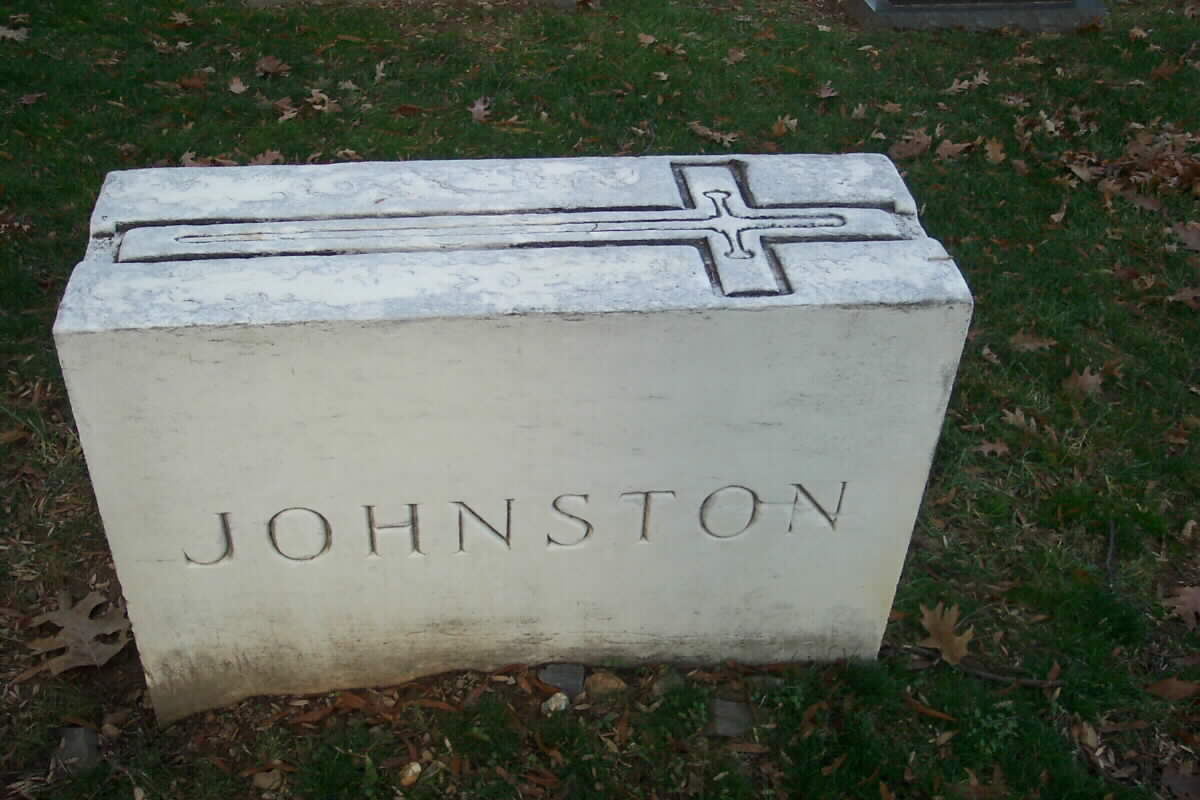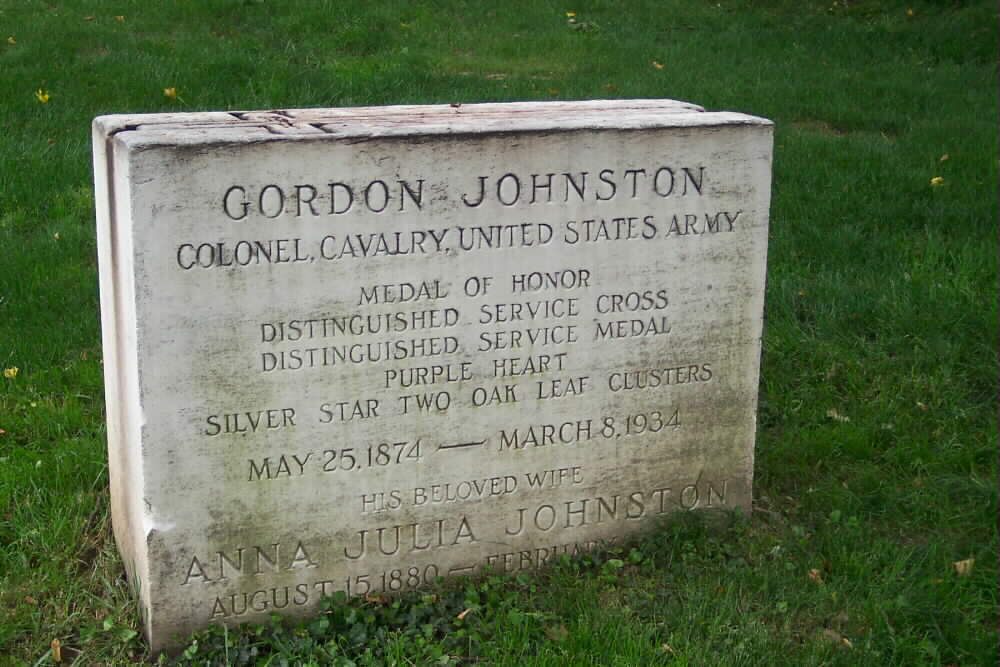Gordon Johnston was a cavalryman, but it was while he was detailed to the Signal Corps that he earned his Medal of Honor. Highly decorated – besides the Medalof Honor, he received the Distinguished Service Cross, Distinguished Service Medal, three Silver Stars, Purple Heart and France’s Officer of the Legion of Honor in World War I (he won every medal authorized at the time of World War I) – he served in war theaters such as the Philippine Insurrection, Cuban Occupation, on the Mexican border and with the American Expeditionary Forces in France in World War I.
The son of Confederate General Robert Daniel Johnston, he graduated from Princeton University in 1896. However, he began his military service June 8, 1898, as a 24-year-old enlisted man during the Spanish-American War – as a Sergeant in Company M, 2d Mississippi Volunteer Infantry Regiment. He transferred July 1, 1898, to Troop M, 1st U.S. Volunteer Cavalry (better known as the Rough Riders), as a Private, in which unit and at which time Leonard Wood was a Colonel and Theodore Roosevelt a Lieutenant Colonel. Both Wood and Roosevelt came to admire Johnston and were powerful friends. Johnston’s transfer to the cavalry was significant, for horsemanship and the cavalry were dominating passions with him throughout his military career.
Johnston’s enlisted time lasted through most of 1898, then he apparently returned to “civilian life” for a while in late 1898-early 1899. Roosevelt recommended that Johnston be offered a commission as a second lieutenant in 43d Infantry Regiment, which Johnston accepted in August 1899. His service took him to the Philippine Islands and the Insurrection, where in February 1900 he performed an act that years later won him the DSistinguished Service Cross.
“While in command of a small detachment of scouts,” the 1924 DSC citation read, “he displayed remarkable gallantry and leadership in charging a greatly superior force of entrenched insurgents in the face of cannon and rifle fire, driving the enemy from their position and capturing the town of Palo.”
Johnston sought and won, with Roosevelt’s support, a commission in the Regular Army. In October 1902 Johnston became a first lieutenant in the cavalry and graduated from the Army’s infantry and cavalry school as the honor graduate in 1903. However, in September 1903 he was detailed to the Signal Corps. The law provided that officer vacancies in the corps could be filled by line officers detailed for four years. Devoted to the cavalry as he was, Johnston wasn’t happy about the Signal Corps assignment, which, he said, “came without examination or application on my part.”
Johnston again went to the Philippines, this time as a Signal officer. On March 7, 1906, he distinguished himself at Mount Bud-Dajo. According to a report by 6th Infantry’s Major Omar Bundy, Johnston “voluntarily joined me on the trail at daybreak … before the advance began and accompanied me to the last trench below the cotta. While waiting to complete the dispositions for the charge, he asked and obtained permission to advance to the base of the cotta. This he did under a hot fire from the Morro rifle pit to our left. He was among the first to reach the cotta. When the charge was ordered, while gallantly raising himself up to gain a foothold to climb up in advance of the others, he was severely wounded. This especially brave action … distinguished his conduct above that of his comrades. …”
Bundy’s recommendation that Johnston be awarded the Medal of Honor was approved by the officer commanding the expedition and by the commanding general of the Philippines Division. Johnston’s Medal of Honor was issued November 7, 1910. His wound at Bud-Dajo probably earned him the Purple Heart also when this award was re-established in 1932.
While on temporary duty at the German Riding Academy in Hanover in 1906 – where he had been sent before he was restored to regular duty following his injury – he asked to be released from the Signal Corps assignment. The detail was terminated in December 1906.
After he finished attending the German Riding Academy in 1907, his career was “quiet” until the United States entered WWI, then Johnston began rapidly advancing in rank. He moved from an infantry major in the National Army in August 1917 to lieutenant colonel in May 1918 (accepted June 1918) and colonel in October 1918. While Johnston was chief of staff for 82d Infantry Division in October 1918, he helped direct the unit’s Argonne-area operations; his performance here garnered him the DSM in 1919. He was again rewarded with a position of higher authority and responsibility when he became acting chief of staff for VII Army Corps.
Johnston graduated from General Staff College in June 1918, and in July 1920 became a Lieutenant Colonel in the Regular Army. Wood selected Johnston as a member of the Wood-Forbes Mission to the Philippines in 1921 and as assistant to the Governor General.
After Johnston returned to the United States, he graduated from the cavalry advanced course in 1925 and from the Army War College in 1926. He was promoted to Colonel in the Regular Army in 1929 and retired from the Army with that rank.
Johnston died at age 60 from a polo accident March 7, 1934. He is buried in Arlington National Cemetery. The Signal Regiment inducted Johnston as a Distinguished Member in 1998.
Camp Gordon Johnston, a 155,000-acre World War II training installation in coastal Franklin County, Fla., was named for him. The short-lived camp (1942-1946) served as an amphibious-warfare training center.
Born at Charlotte, North Carolina, May 25, 1874, the son of General Robert Daniel Johnston (CSA) and Elizabeth Johnson Evans Johnston, he graduated from Princeton University in 1896, was an honor graduate of the Infantry and Cavalry School in 1903, a graduate of the General Staff College, June 1918.
He served as Sergeant, Company M, 2nd Mississippi Volunteer Infantry and Private, Troop M, 1st U.S. Volunteer Cavalry (The Rough Riders), June 8-September 15, 1898, Spanish-American War.
He was commissioned Second Lieutenant, 43rd U.S. Infantry August 17, 1899; 2nd U.S. Cavalry, August 5, 1901; Major, National Army, August 21, 1917, Lieutenant Colonel, July 1, 1920. He served in the Philippine Insurrection, the Cuban Occupation, on the Mexican Border and with the American Expeditionary Forces in France in World War I. He was Chief-of-Staff, 82nd Infantry Division, October 1918 and was later Acting Chief-of-Staff, VII Army Corps. He was selected by Major General Leonard Wood as a member of the Wood-Forbes Mission to the Philippines and as Assistant to the Governor General, 1921.
He earned the Medal of Honor for “extraordinary gallantry in action at Bud Dajo, Sulu, Philippine Islands” March 1906. He was also awarded the Distinguished Service Cross, the Distiguished Service Medal, the Silver Star, the Purple Heart and the Officer of the Legion of Honor (France) in World War I. He won every medal authorized at the time of World War I.
He died on March 8, 1934 and was buried in Section 7 of Arlington National Cemetery. His wife, Anna Julia Johnston (August 15, 1880-February 15, 1976), is buried with him.
Gordon Johnston was a cavalryman, but it was while he was detailed to the Signal Corps that he earned his Medal of Honor. Beginning his military service as an enlisted man during the Spanish-American War, he was commissioned in 1899. He served in the Philippines and earned the Distinguished Service Cross in February 1900. In September 1903, while a first lieutenant, he was detailed to the Signal Corps.
Although First Lieuenant Johnston wasn’t pleased with the Signal Corps assignment, he again went to the Philippines. On March 7, 1906, he distinguished himself at Mount Bud-Dajo. According to a report by 6th Infantry’s Major Omar Bundy, First Lieutenant Johnston “voluntarily joined me on the trail at daybreak … before the advance began and accompanied me to the last trench below the cotta. While waiting to complete the dispositions for the charge, he asked and obtained permission to advance to the base of the cotta. This he did under a hot fire from the Morro rifle pit to our left. He was among the first to reach the cotta. When the charge was ordered, while gallantly raising himself up to gain a foothold to climb up in advance of the others, he was severely wounded. This especially brave action .. distinguished his conduct above that of his comrades.”
Major Bundy’s recommendation that First Lieutenant Johnston be awarded the Medal of Honor was approved by the officer commanding the expedition and by the commanding general of the Philippines Division. Lieuenant Johnston’s Medal of Honor was issued November 7, 1910. His wound at Bud-Dajo probably earned him the Purple Heart also when this award was re-established in 1932.
While on temporary duty at the German Riding School in Hanover in 1906 – where he had been sent before he was restored to regular duty following his injury – he asked to be released from the Signal Corps assignment. The detail was terminated in December 1906.
Lieuetnant Johnston’s later career was as an infantry Major in the National Army in August 1917, then Lieutenant Colonel in May 1918 and Colonel in October 1918. In July 1920 he became a Lieutenant Colonel in the Regular Army, and in 1929 a Colonel.
Colonel Johnston was assigned to the General Staff Corps, and in 1919 was awarded the Distinguished Service Medal while serving as chief of staff for 82d Division during the unit’s Argonne area operations.
At the time of his death from a polo accident March 7, 1934, Colonel Johnston also held the Silver Star with two oak-leaf clusters. He is buried in Arlington National Cemetery.
The Signal Regiment inducted Colonel Johnston as a Distinguished Member in 1998.
Courtesy of the U.S. Army Signal Corps:
Gordon Johnston was born in Charlotte, North Carolina, into a southern family of considerable prominence. He graduated from Princeton University in 1896. Johnston was an honor graduate of the Infantry and Cavalry School in 1903; attended the German Riding Academy in Hanover from 1906 to 1907; and graduated from the advanced course in the Cavalry school in 1925. And from the Army War College 1n 1926.
Johnston began his military service as an enlisted man during the Spanish-American War in the 2nd Mississippi Infantry Regiment in 1898. He soon secured a Transfer to the 1st U.S. Volunteer Cavalry Regiment, in which at that time Leonard Wood was a Colonel and Theodore Roosevelt a lieutenant colonel. Both Wood and Roosevelt came to admire Johnston and they were powerful friends. This transfer to the Cavalry was significant, for horsemanship and the Cavalry were dominating passions with Johnston throughout is military career. Although he must have served in at least six different Cavalry regiments.
While apparently in civilian life for short while in 1899, Johnston was offered and accepted a commission as a second lieutenant in the forty-third infantry regiment upon the Theodore Roosevelt’s recommendation. This service took him do the Philippines and the Insurrection, where in February 1900 he performed an act years later won him a Distinguished Service Cross. ” While in command of a small detachment of scouts, “the 1924 citation read, “he displayed remarkable gallantry and leadership in charging a greatly superior force of entrenched insurgents in the face of cannon and rifle fire, driving the enemy from their position and capturing the town of Palo.”
Johnston sought and won, with determined support of Theodore Roosevelt, a commission in the regular army. In October gain 1902 Johnston became a 1st lieutenant in the Cavalry, but in September 1903 he was detailed to the signal Corps. The long provided them all Conservatives cheese them accord could be filled by line officers detailed core for years. Devoted to the cavalry as was, Johnston was not happy about this assignment, which, he said, came ” without examination or application on my part. “
While on temporary duty at the German Riding School in Hanover in 1906, where he had been sent before restoration to regular duty following is injury in the Philippines that later won him Medal of Honor, Johnston for the second time sought release the Signal Corps, this time successfully. Johnston’s detail in the Signal Corps was terminated in December 1906 and the next year found him back in the Cavalry.
Meanwhile, however, on 7 March 1906, while still assigned to the Signal Corps, Johnston distinguished himself at mount Bud-Dajo, Jolo, Philippine Islands, as can be seen from the following report of Major Omar Bundy, 6th Infantry, quoted by General F.C. Ainsworth, The Adjutant General, in 1907:
1st Lieutenant Gordon Johnston, Signal Corps, voluntarily joined me on the trail at daybreak on the 7th before the advance began, and accompanied me to the last trench below the cotta. While waiting here to complete the dispositions for the charge, he asked and obtained permission to advance to the base of the cotta. He did this under a hot fire from the Morro rifle pit to our left. He was among the first to reach the cotta, and when the charge was ordered, while gallantry raising himself up to gain a foothold to climb up in advance of the others and was severely wounded. For this especially brave action, which distinguished his conduct above that of his comrades, I recommend that he be given the Medal of Honor.
The recommendation that Johnston be awarded the Medal of Honor was approved by the officer commanding the expedition and by the commanding general of the Philippines Division.
In 1911 Johnston was awarded the Medal of Honor for the Bud-Dajo action. The citation stated that he “voluntarily took part in and was dangerously wounded during the assault on the enemy’s works.” His wound probably earned Johnston the Purple Heart when this award was reestablished in 1932.
With the nation at war, Johnston was commissioned as an infantry Major in the National Army in August 1917, a Lieutenant Colonel in May 1918 (accepted, June 1918), and a Colonel in October1918. In July 1920 he became a Lieutenant Colonel in the Regular Army and in 1929 a Colonel.
Evidently Johnston was assigned to the General Staff Corps and in 1919 was awarded the Distinguished Service Medal while serving as Chief of Staff of the 82nd Division in the operations of the Argonne area.
At the time of his death, from a polo accident on 7 March 1934, he also held a Silver Star with Oak Leaf Clusters. Johnston was buried in Arlington National Cemetery.
JOHNSTON, GORDON
- Second Lieutenant, U.S. Army
- 43d Infantry, U.S. Volunteers
- Date of Action: February 1, 1900
- General Orders No. No. 13, W.D., 1924
Citation
The Distinguished Service Cross is presented to Gordon Johnston, Second Lieutenant, U.S. Army, for extraordinary heroism in action at Palo, Leyte, Philippine Islands, February 1, 1900.
While in command of a small detachment of scouts Lieutenant Johnston displayed remarkable gallantry and leadership in charging a greatly superior force of entrenched insurgents in the face of cannon and rifle fire, driving the enemy from their position and capturing the town of Palo.
JOHNSTON, GORDON
MEDAL OF HONOR
Rank and organization: First Lieutenant, U.S. Signal Corps. Place and date: At Mount Bud Dajo, Jolo, Philippine Islands, 7 March 1906. Entered service at: Birmingham, Alabama. Born: 25 May 1874, Charlotte, North Carolina. Date of issue: 7 November 1910. G.O. No.: 207.
Citation
Voluntarily took part in and was dangerously wounded during an assault on the enemy’s works.
JOHNSTON, GORDON
Second Lieutenant, U.S. Army
43d Infantry, U.S. Volunteers
General Orders No. No. 13, W.D., 1924
Home Town: Birmingham, AL
Date of Action: February 1, 1900
Citation:
The Distinguished Service Cross is presented to Gordon Johnston, Second Lieutenant, U.S. Army, for extraordinary heroism in action at Palo, Leyte, Philippine Islands, February 1, 1900.
While in command of a small detachment of scouts Lieutenant Johnston displayed remarkable gallantry and leadership in charging a greatly superior force of entrenched insurgents in the face of cannon and rifle fire, driving the enemy from their position and capturing the town of Palo.
Other Award: Medal of Honor (Philippine Insurrection)
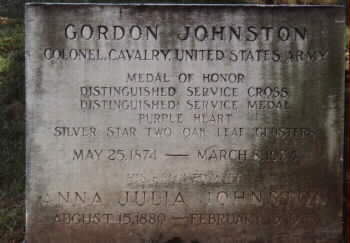
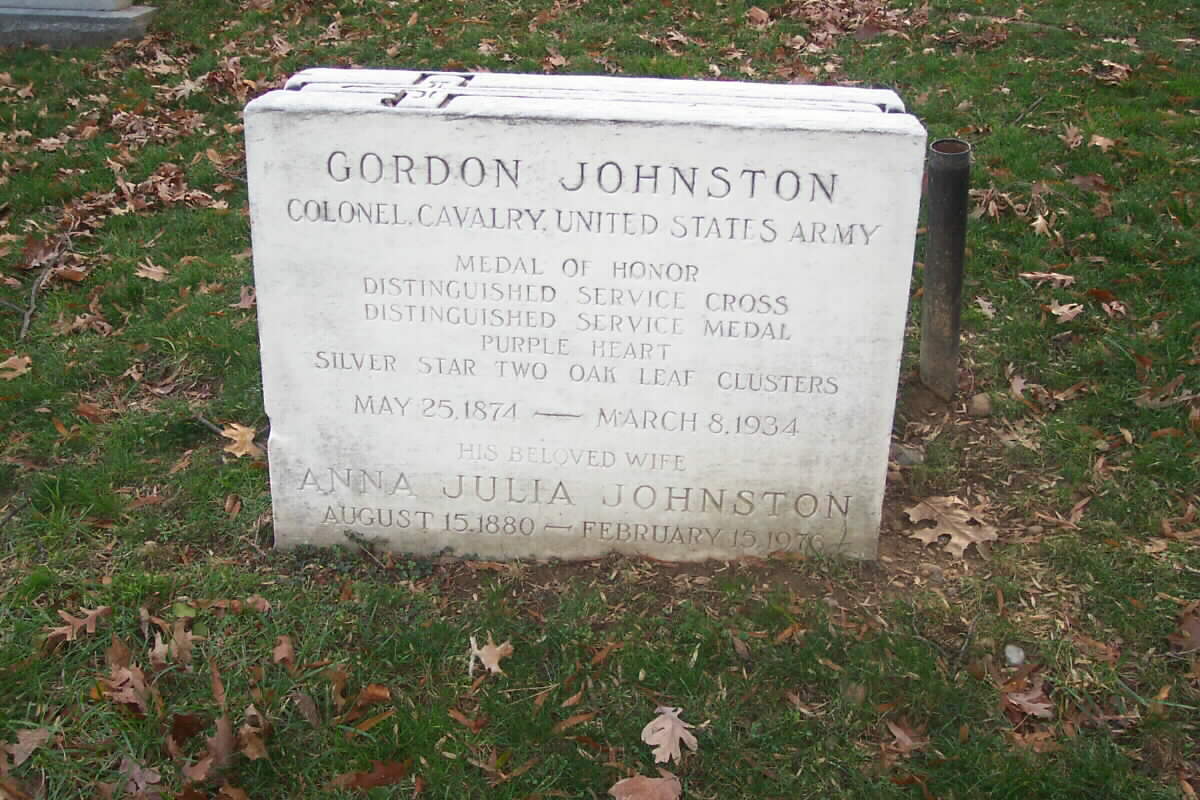
JOHNSTON, GORDON
- COLONEL 6TH CAV US ARMY
- VETERAN SERVICE DATES: Unknown
- DATE OF DEATH: 03/08/1934
- DATE OF INTERMENT: 03/15/1934
- BURIED AT: SECTION 7 SITE 10092
ARLINGTON NATIONAL CEMETERY
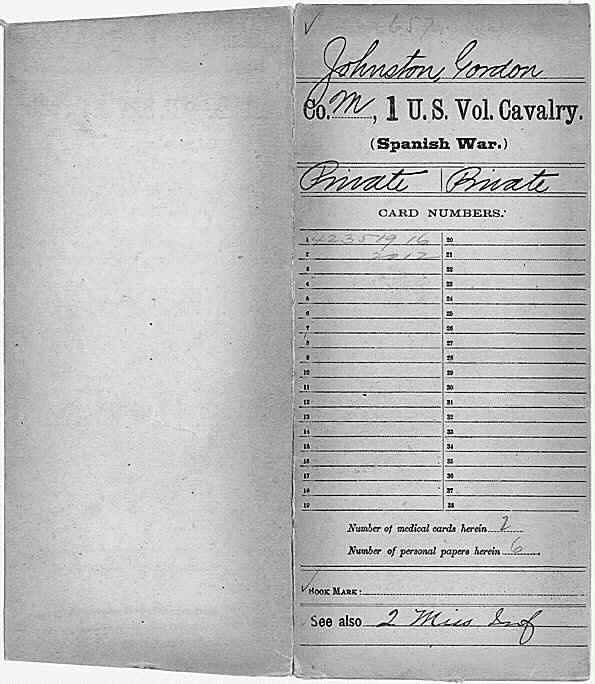
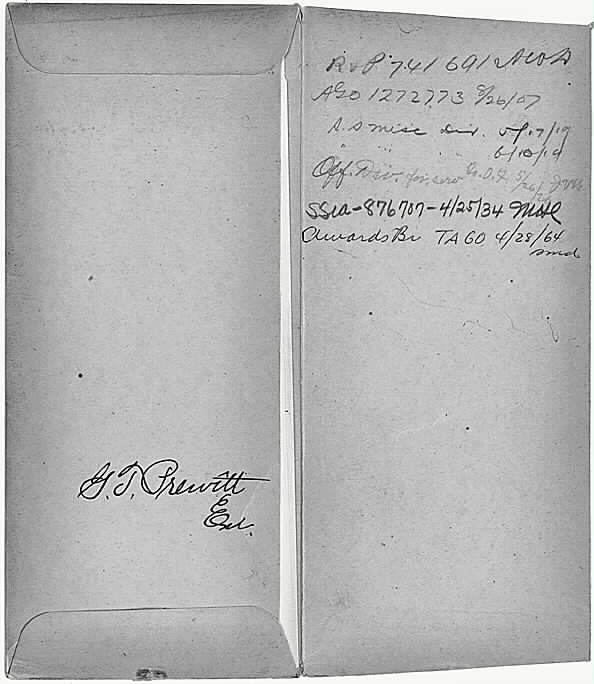
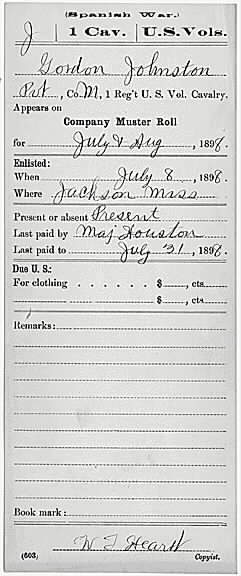
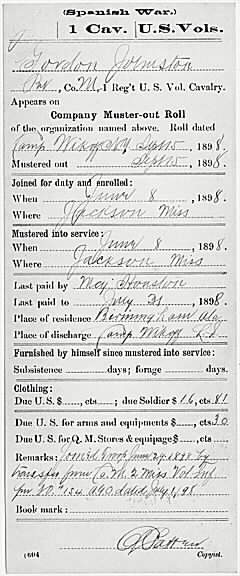
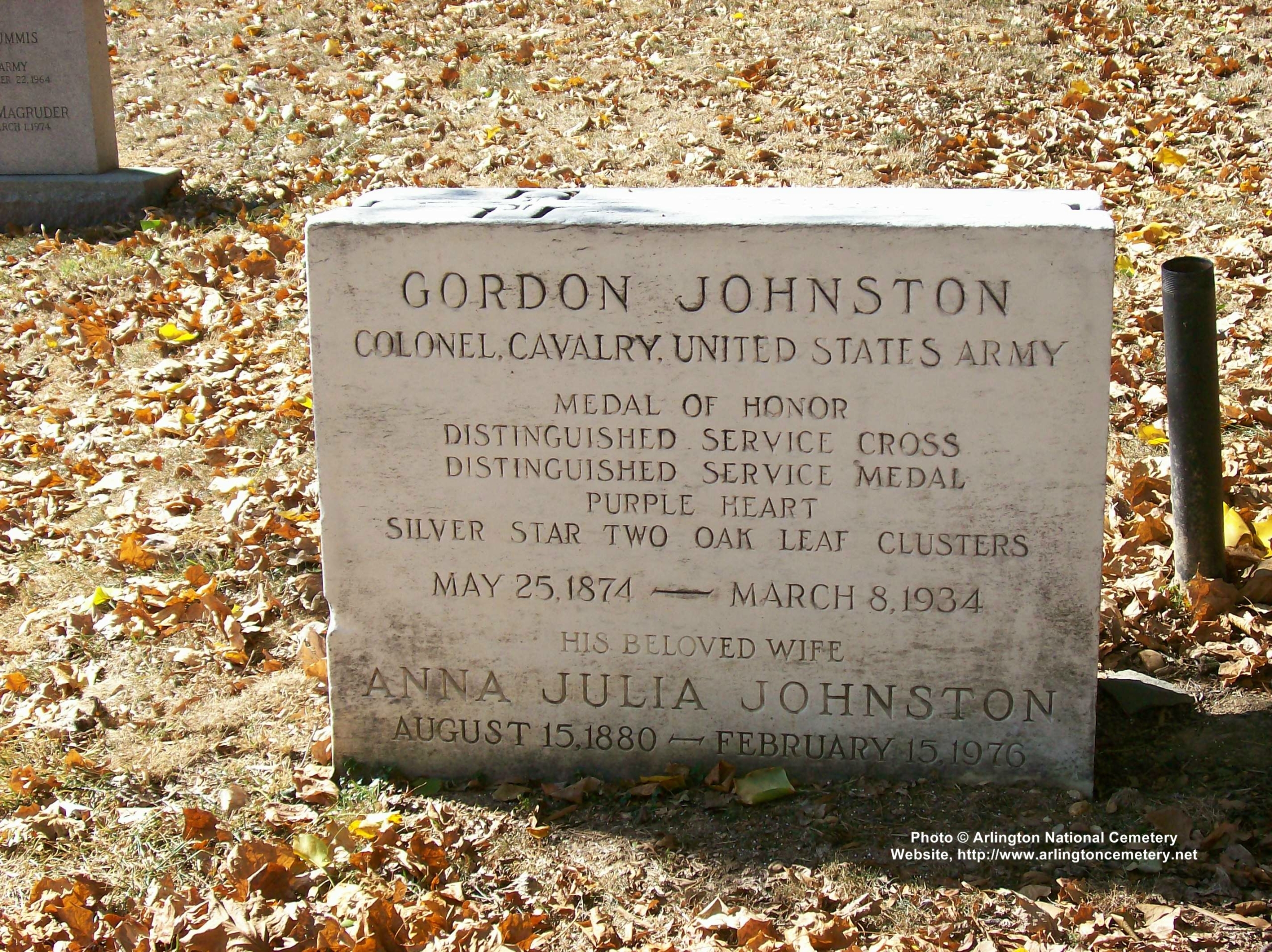
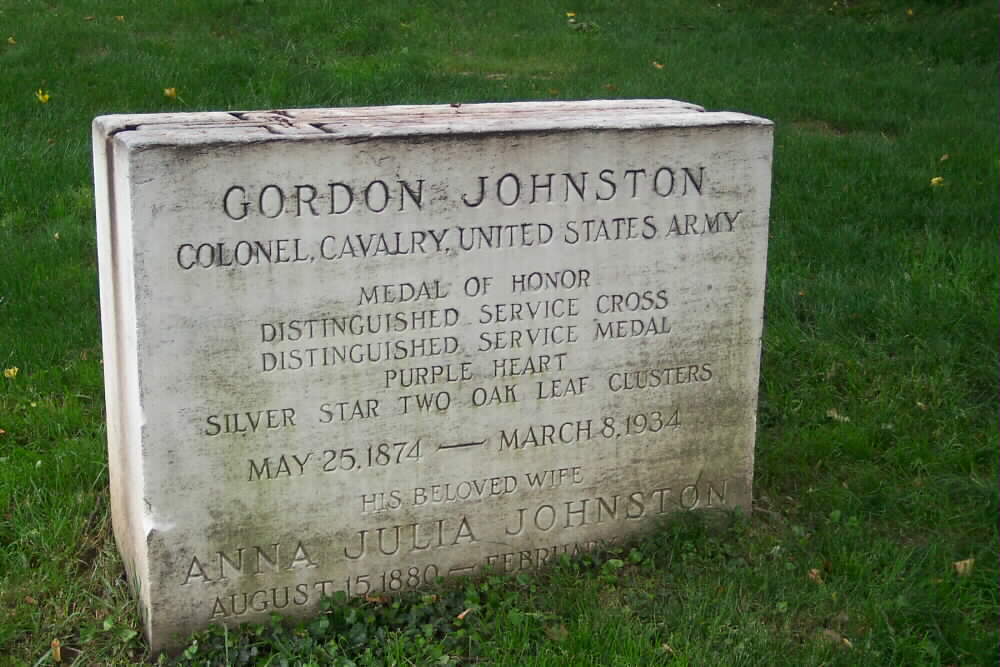
Michael Robert Patterson was born in Arlington and is the son of a former officer of the US Army. So it was no wonder that sooner or later his interests drew him to American history and especially to American military history. Many of his articles can be found on renowned portals like the New York Times, Washingtonpost or Wikipedia.
Reviewed by: Michael Howard

